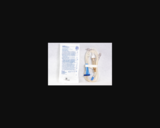
Photo showing macrodrop tubing and packaging
- Subject:
- Career and Technical Education
- Health Science
- Material Type:
- Diagram/Illustration
- Author:
- Deanna Hoyord
- Date Added:
- 04/14/2021

Photo showing macrodrop tubing and packaging

Photo showing both macrodrip and microdrip IV tubing

Observational data set since 1855 from both Madison area lakes Mendota and Monona from the Wisconsin State Climatology Office and Nelson Institute for Environmental Studies

Richard (Dick) Ira Bong, America’s Ace of Aces, was born on September 24, 1920 in Superior, Wisconsin to Carl and Dora Bong. This digital exhibit by Autumn Wolter, intern at the Richard I. Bong Veterans Historical Center in Superior, Wisconsin, describes Major Bong's childhood and Army Air Corps service through images.
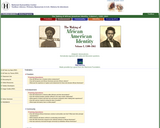
The National Humanities center presents reading guides with primary source materials for the study of The Making of African American Identity: Volume 1: 1500-1865. Primary source materials include narratives, photographs, letters, memoirs, songs, newspapers, petitions, addresses, journals, paintings and more. Sources are divided into the topics: Freedom, Enslavement, Community, Identity, and Emancipation.
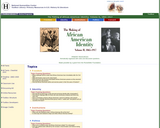
The National Humanities center presents reading guides with primary source materials for the study of The Making of African American Identity, Volume 2: 1865-1917. Primary source materials include paintings, sculpture, narratives, autobiographies, short stories, essays, songs, letters, poems, photographs, interviews, and more. Sources are divided into the topics: Freedom, Identity, Institutions, Politics, and Forward.
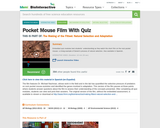
The film features Dr. Michael Nachman, whose work in the field and in the lab has quantified the selective pressure of predators on rock pocket mouse evolution and identified the genes involved in adaptation. This version of the film pauses at three points where students answer questions about the film to assess their understanding of the concepts presented. After completing all quiz modules, students can view and print their answers. The original version of the film, without the embedded assessment, is available to stream or download as well. The video and all materials are also available in Spanish.

Image showing a simulated patient wearing glasses
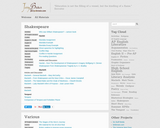
The mandala assignment allows students to demonstrate learning using figurative language in an artistic format.
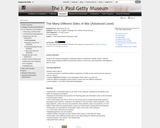
Students will compare portrayals of individual soldiers to depictions of battle scenes, write two articles representing two different perspectives about a current war, and manipulate a photograph to alter its mood.
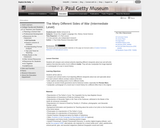
Students will compare and contrast artworks depicting different viewpoints about war and will write captions that describe works of art in different media. They will also manipulate the image depicted in a photograph of a war in recent history.

This resource can be used for introducing the concepts involved in formatting a Word document. It illustrates and explains how to manipulate margins, paragraph indents and line spacing.

Students will compare the price of goods from one time period to another and through discussion and role play interpret the effects of inflation on consumers. They will categorize goods and services according to the eight major groups of the consumer price index and be able to determine the difference between the Consumer Price Index (CPI) and the core CPI.

The marketing mix and the 4Ps of marketing are often used as synonyms for each other. In fact, they are not necessarily the same thing.
"Marketing mix" is a general phrase used to describe the different kinds of choices organizations have to make in the whole process of bringing a product or service to market. The 4Ps is one way – probably the best-known way – of defining the marketing mix, and was first expressed in 1960 by E J McCarthy.

This video teaches the concept of Markets and Prices. A market refers to a group of buyers and sellers for a given good or service. The price is the amount of money needed to buy a particular good or service.
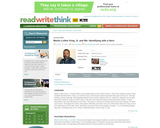
This is a lesson on history for students to gain knowledge and understanding of what makes a hero using Martin Luther King Jr. as the prime example. Students will explore a time line of Dr. Kings life and the major contribututions he made in order to become a hero. By exploring his life in detail, the students will be able to compare and contrast their lives with the life of Dr. King.

This adoption process timeline provides a simple visual of the steps that guide the materials adoption process.

This course takes students on a historical, scientific, and cultural exploration through the world of materials from the cosmos to the atom, from Asimov to Pauling, from ancient Mesopotamia to modern day Pennsylvania, and from early mans primitive stone tools to the complex materials that help us build, communicate, travel, work and live in the 21st century.

This resource will assist students who are having a difficult time with estimation. The interactive site gives examples of how to estimate and strategies in how to estimate. The site also has printed materials for the students to use for practice. An assessment is also included.

One sheet outlining the math talk moves and how to use them when responding to students during discussion.